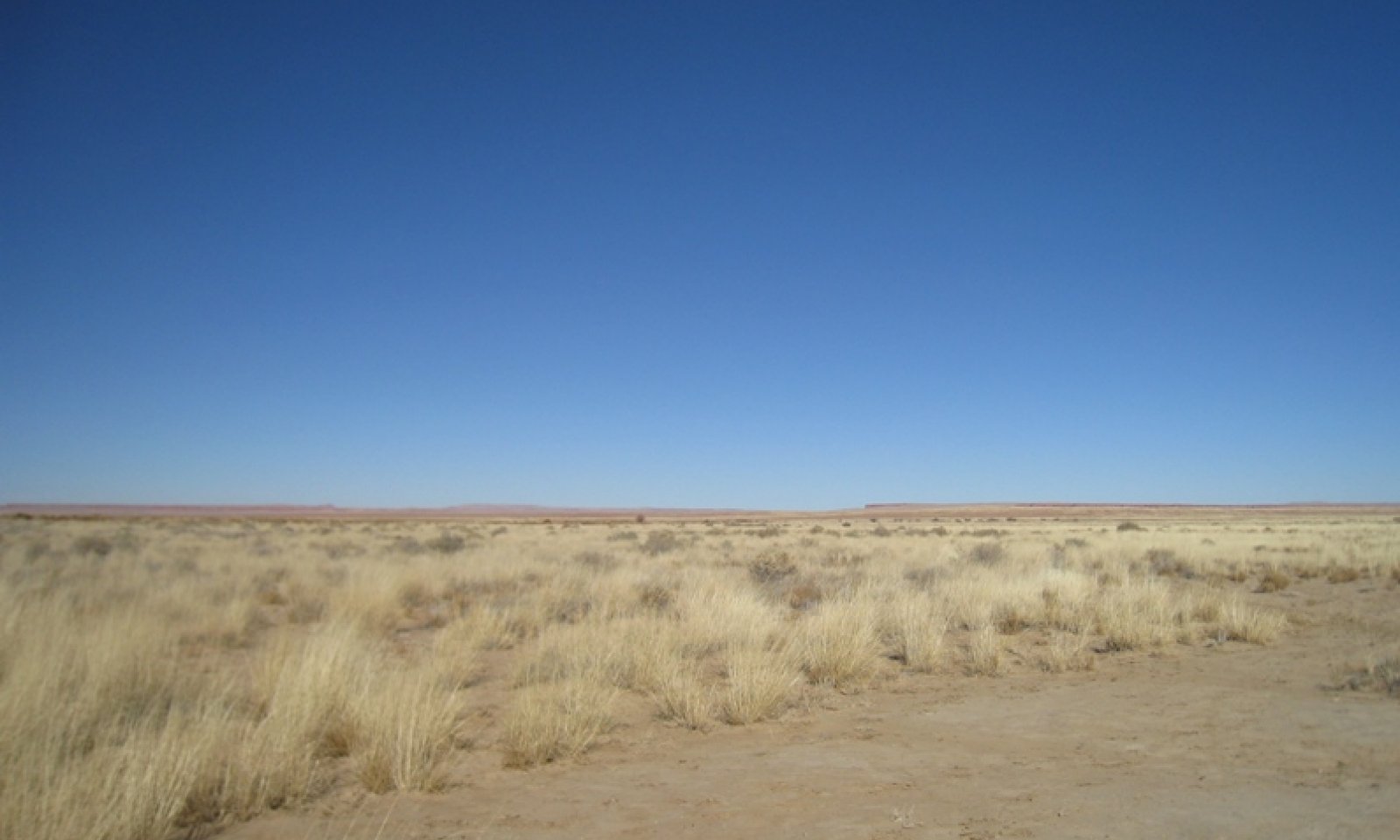

Natural Resources
Conservation Service
Ecological site R035XB209AZ
Loamy Wash 6-10" p.z.
Accessed: 12/21/2025
General information
Provisional. A provisional ecological site description has undergone quality control and quality assurance review. It contains a working state and transition model and enough information to identify the ecological site.
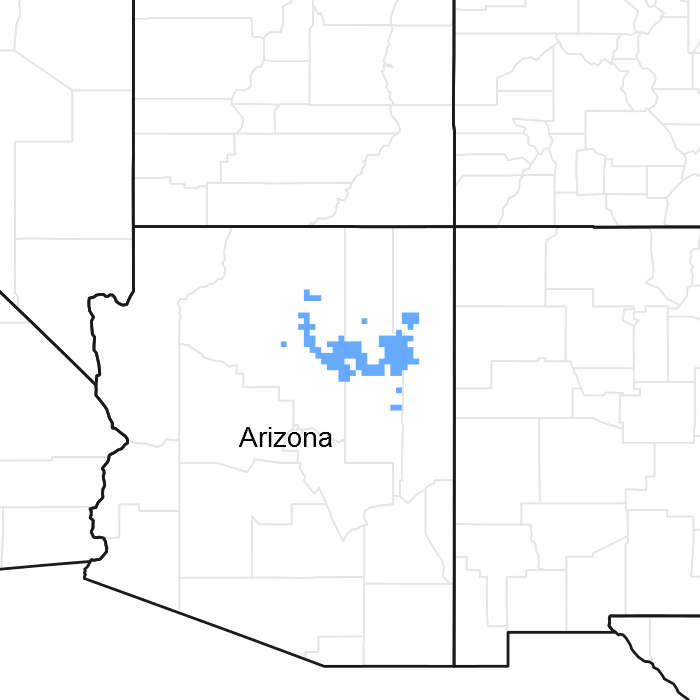
Figure 1. Mapped extent
Areas shown in blue indicate the maximum mapped extent of this ecological site. Other ecological sites likely occur within the highlighted areas. It is also possible for this ecological site to occur outside of highlighted areas if detailed soil survey has not been completed or recently updated.
MLRA notes
Major Land Resource Area (MLRA): 035X–Colorado Plateau
This ecological site occurs in Common Resource Area 35.2 - the Colorado Plateau Shrub – Grasslands
Elevations range from 3800-5800 feet and precipitation averages 6 to 10 inches per year. Vegetation includes shadscale, fourwing saltbush, Mormon tea, blackbrush, Indian ricegrass, galleta, blue grama, and black grama. The soil temperature regime is mesic and the soil moisture regime is typic aridic. This unit occurs within the Colorado Plateau Physiographic Province and is characterized by a sequence of flat to gently dipping sedimentary rocks eroded into plateaus, valleys and deep canyons. Sedimentary rock classes dominate the plateau with volcanic fields occurring for the most part near its margin.
Table 1. Dominant plant species
| Tree |
Not specified |
|---|---|
| Shrub |
(1) Atriplex canescens |
| Herbaceous |
(1) Pascopyrum smithii |
Physiographic features
This site occurs in a bottom position on floodplains and low stream terrace that are subject to flooding following rainfall events. The soils have loam textured surfaces, and are deep Slopes are less than 5 percent.
Table 2. Representative physiographic features
| Landforms |
(1)
Flood plain
(2) Alluvial fan |
|---|---|
| Flooding duration | Very brief (4 to 48 hours) to brief (2 to 7 days) |
| Flooding frequency | Rare to occasional |
| Elevation | 3,800 – 5,800 ft |
| Slope | 5% |
| Aspect | Aspect is not a significant factor |
Climatic features
Area has a very dry and windy climate that is hot in the summer and cold in the winter. Average annual precipitation is from 6 to 10 inches. Soil moisture regime is typic aridic and the soil temperature regime is mesic. A slight majority of the precipitation arrives during the late fall, winter, and early spring. this winter season moisture originates in the Pacific Ocean and arrives as rain, or sometimes snow, during widespread frontal storms of generally low intensity. The majority of the snow falls from December through February, but rarely lasts more than a few days. The driest period is from late May to early July. Summer rains occur from July through September during brief intense local thunderstorms. The rain is sporadic in intensity and location. Windy conditions are common year round with the strongest most frequently in the spring.
Table 3. Representative climatic features
| Frost-free period (average) | 181 days |
|---|---|
| Freeze-free period (average) | 207 days |
| Precipitation total (average) | 10 in |
Figure 2. Monthly precipitation range
Figure 3. Monthly average minimum and maximum temperature
Influencing water features
Soil features
These soils are stratified flow deposited soils that are deep and well drained, formed from mixed alluvium. The surface layer texture range from very fine sandy loam to sandy clay loam. The subsurface textures are typically loamy, but may have stratafied layers of coarser and finer textures. Permeability is moderately rapid to moderately slow. Available water capacity is 6 to 13 inches. Effective rooting depth is more than 60 inches. Runoff is very slow to moderate. The erosion hazards are slight. Typical soil taxonomic units include:
SSA 631 Coconino County Central Part - MU 52 Ives;
SSA 633 Navajo County Central Part - MU 26 Jocity;
SSA 707 Little Colorado River Area - MU 16 Ives, 17 Jocity, 19 Joraibi, 20 Jocity, 21 Jocity, 61 Tours;
SSA-715 Fort Defiance Area (NM/AZ) MU 44 Jocity, 98 Typic torrifluvents, 134 Jocity;
SSA 714 Hopi - MU 12 Jocity;
SSA 717 Shiprock - MU 175 Suwanee.
Table 4. Representative soil features
| Parent material |
(1)
Alluvium
–
sandstone and shale
|
|---|---|
| Surface texture |
(1) Loam (2) Fine sandy loam (3) Sandy loam |
| Family particle size |
(1) Loamy |
| Drainage class | Somewhat poorly drained to moderately well drained |
| Permeability class | Moderately slow to moderately rapid |
| Soil depth | 40 – 60 in |
| Available water capacity (0-40in) |
6 – 13 in |
| Electrical conductivity (0-40in) |
2 – 8 mmhos/cm |
| Sodium adsorption ratio (0-40in) |
10 – 35 |
| Soil reaction (1:1 water) (0-40in) |
7.4 – 8.4 |
Ecological dynamics
An ecological site is not a precise assemblage of species for which the proportions are the same from place to place or from year to year. In all plant communities, variability is apparent in productivity and occurrence of individual species. Spatial boundaries of the communities; however, can be recognized by characteristic patterns of species composition, association, and community structure. The historic climax plant community for this ecological site has been described by sampling relict or relatively undisturbed sites and/or reviewing historic records. The historic climax plant community is the plant community that evolved over time with the soil forming process and long term changes in climatic conditions of the area. It is the plant community that was best adapted to the unique combination of environmental factors associated with the site.
Natural disturbances, such as drought, fire, grazing of native fauna, and insects, are inherent in the development and maintenance of these plant communities. The effects of these disturbances are part of the range of characteristics of the ecological site. Fluctuations in plant community structure and function caused by the effects of natural disturbances help establish the boundaries and characteristics of an ecological site. They are accounted for as part of the range of characteristics of the ecological site. Recognizable plant community phases are identified in the reference state of the ecological site. Some sites may have a small range of variation, while others have a large range. Some plant community phases may exist for long periods of time, while others may only occur for a couple of years after a disturbance.
Deterioration of the plant community, hydrology, or soil site stability on an ecological site can result in crossing a threshold or potentially irreversible boundary to another state, or equilibrium. This can occur as a result of the loss of soil surface through erosion, the loss of the stability of the site due to disturbances that cause active erosion on the site, increases in the amounts and/or patterns or runoff from rainstorms, changes in availability of surface and subsurface water, significant changes in plant structural and functional types, or the introduction of non-native species. When these thresholds are crossed, the potential of the ecological site to return to the historic climax plant community can be lost, or restoration will require significant inputs . There may be multiple states possible for an ecological site, determined by the type and or severity of disturbance.
The known states and transition pathways for this ecological site are described in the state and transition model. Within each state, there may be one or more known plant community phases. These community phases describe the different plant community that can be recognized and mapped across this ecological site. The state and transition model is intended to help land users recognize the current plant community on the ecological site, and the management options for improving the plant community to the desired plant community.
Plant production information in this site description is standardized to the annual production on an air-dry weight basis in near normal rainfall years.
This site has a somewhat variable plant community because of the nature and composition of the soils. Frequent deposition of different material types by water and wind processes, and the lack of dependability of available water, will affect the plant community. Areas with frequent flooding will have low-salt tolerant vegetation; however, areas with less-frequent or absent flooding will possibly have a salt-tolerant plant community. Areas that have a stable and pedogenically active soil will have the ability to sustain grasses and native shrubs and trees; areas with recent deposition and little to no pedogenesis will have pioneer species, subject to change from year to year or even season to season.
State and transition model

Figure 4. STM R035XB209AZ
More interactive model formats are also available.
View Interactive Models
More interactive model formats are also available.
View Interactive Models
Click on state and transition labels to scroll to the respective text
State 1 submodel, plant communities
State 2 submodel, plant communities
State 3 submodel, plant communities
State 1
Reference State
Original pre-settlement plant community with cool and warm season grasses dominating with scattered four-wing saltbush and other native shrubs and forbs
Community 1.1
Historic Climax Plant Community

Figure 5. Loamy Wash 6-10" p.z.
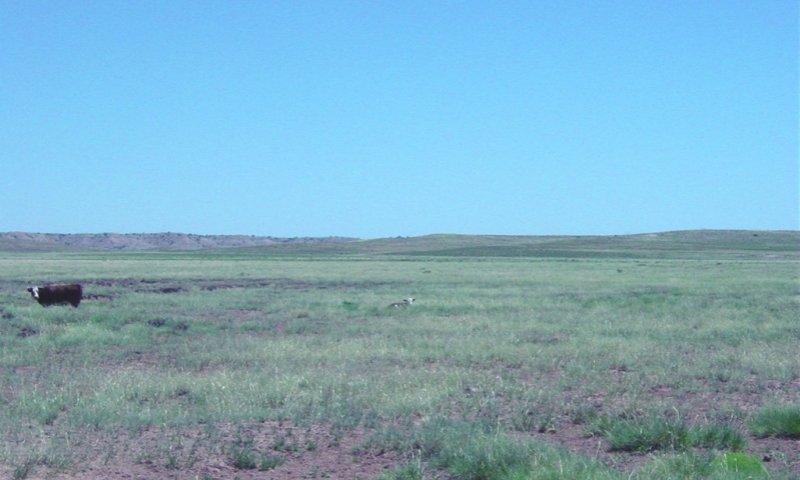
Figure 6. Loamy Wash 6-10" p.z.
Plant community on this site is primarily made up of mid and short grasses and shrubs with a relatively small percentage of forbs. In the plant community there is a mixture of cool and warm season grasses. Dominate species include western wheatgrass, blue grama, alkali sacaton and fourwing saltbush. Plant species most likely to invade or increase on this site when it deteriorates are broom snakeweed, rabbit brush, russian thistle and annuals. Continuous grazing during the winter and spring periods will decrease the cool season grasses, which are replaced by warm season, lower forage value grasses and shrubs.
Figure 7. Annual production by plant type (representative values) or group (midpoint values)
Table 5. Annual production by plant type
| Plant type | Low (lb/acre) |
Representative value (lb/acre) |
High (lb/acre) |
|---|---|---|---|
| Grass/Grasslike | 600 | 900 | 1180 |
| Shrub/Vine | 170 | 240 | 330 |
| Forb | 30 | 60 | 90 |
| Total | 800 | 1200 | 1600 |
Table 6. Ground cover
| Tree foliar cover | 0% |
|---|---|
| Shrub/vine/liana foliar cover | 3-18% |
| Grass/grasslike foliar cover | 10-40% |
| Forb foliar cover | 1-6% |
| Non-vascular plants | 0% |
| Biological crusts | 0% |
| Litter | 20-50% |
| Surface fragments >0.25" and <=3" | 0-5% |
| Surface fragments >3" | 0% |
| Bedrock | 0% |
| Water | 0% |
| Bare ground | 10-25% |
Table 7. Canopy structure (% cover)
| Height Above Ground (ft) | Tree | Shrub/Vine | Grass/ Grasslike |
Forb |
|---|---|---|---|---|
| <0.5 | – | – | – | – |
| >0.5 <= 1 | – | 5-15% | 20-40% | 0-5% |
| >1 <= 2 | – | 10-20% | 15-30% | 0-1% |
| >2 <= 4.5 | – | 10-15% | – | – |
| >4.5 <= 13 | – | – | – | – |
| >13 <= 40 | – | – | – | – |
| >40 <= 80 | – | – | – | – |
| >80 <= 120 | – | – | – | – |
| >120 | – | – | – | – |
Figure 8. Plant community growth curve (percent production by month). AZ3521, 35.2 6-10" p.z. all sites. Growth begins in the spring and continues through the summer. Most growth in this CRA occurs in the spring using stored winter moisture..
| Jan | Feb | Mar | Apr | May | Jun | Jul | Aug | Sep | Oct | Nov | Dec |
|---|---|---|---|---|---|---|---|---|---|---|---|
| J | F | M | A | M | J | J | A | S | O | N | D |
| 0 | 1 | 9 | 20 | 27 | 14 | 10 | 11 | 5 | 3 | 0 | 0 |
Figure 9. Plant community growth curve (percent production by month). AZ5204, 35.2 6-10" p.z. bottlebrush squirreltail. Most growth occurs in the spring, plants may remain green during the winter..
| Jan | Feb | Mar | Apr | May | Jun | Jul | Aug | Sep | Oct | Nov | Dec |
|---|---|---|---|---|---|---|---|---|---|---|---|
| J | F | M | A | M | J | J | A | S | O | N | D |
| 0 | 5 | 40 | 40 | 5 | 0 | 0 | 0 | 0 | 5 | 5 | 0 |
Figure 10. Plant community growth curve (percent production by month). AZ5211, 35.2 6-10" p.z. fourwing saltbush. Growth begins in spring and continues through the summer. Seed stalk extension occurs in summer with seed set in the fall..
| Jan | Feb | Mar | Apr | May | Jun | Jul | Aug | Sep | Oct | Nov | Dec |
|---|---|---|---|---|---|---|---|---|---|---|---|
| J | F | M | A | M | J | J | A | S | O | N | D |
| 0 | 0 | 5 | 10 | 15 | 20 | 20 | 15 | 10 | 5 | 0 | 0 |
Community 1.2
Fourwing saltbush-Rabbitbrush/Galleta-Alkali sacaton
This plant community is the result of prolonged drought and unmanaged grazing. This creates a plant community shift to a shrub-grass mix with a decrease of cool seasin grasses with a increase of shrubs. The site rarely benefits from overbank flooding with occasional run-in moisture from adjacent uplands. There may be trace amounts of non-native annuals, but they do not alter the function and processes of this platn community phase.
Pathway 1.1a
Community 1.1 to 1.2
Unmanaged grazing, drought, removal of natural fire.
Pathway 1.2A
Community 1.2 to 1.1
Managed grazing, reintroduction of fire to remove shrubs, return to natural flood regime, improved climatic conditions/precipitation.
State 2
Native/ Invaded State
This plant communty is a shrubland with sparse perennial grasses and an increase in native and non-native annuals.
Community 2.1
Native Shrubs with Introduced Annuals
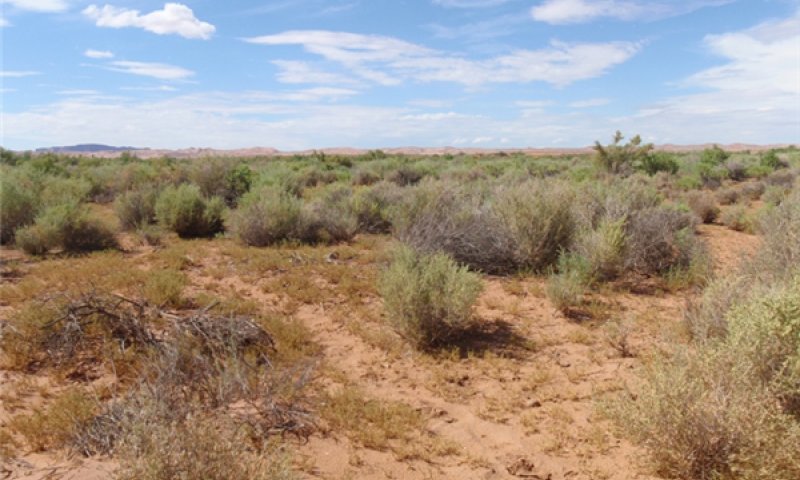
Figure 11. Loamy Wash - Shrubs with Introduced Annuals
This plant communty is shrub dominated by rubber rabbitbrush, snakeweed, and fourwing saltbush. Sites adjacent to saline-sodic uplands will occasionally have scattered greasewood or shadscale. There is a sparse understory of perennial grasses and forbs. Annuals, both native and non-natives are well established and are present in moderate amounts and have largely replace the perennials. A loss of biotic integrity and hydrologic function thru the loss of perennial grass cover and incised channels allows for the site to dry. This results in an increase of shrubs.
State 3
Native/ Invasive State
This site is dominated by an overstory of tamarisk with an understory of primarily annuals and few native shrubs and perennial grasses. Some sites may have a understory invaded by camelthorn or Russian knapweed.
Community 3.1
Native with Invasive Trees & Shrubs
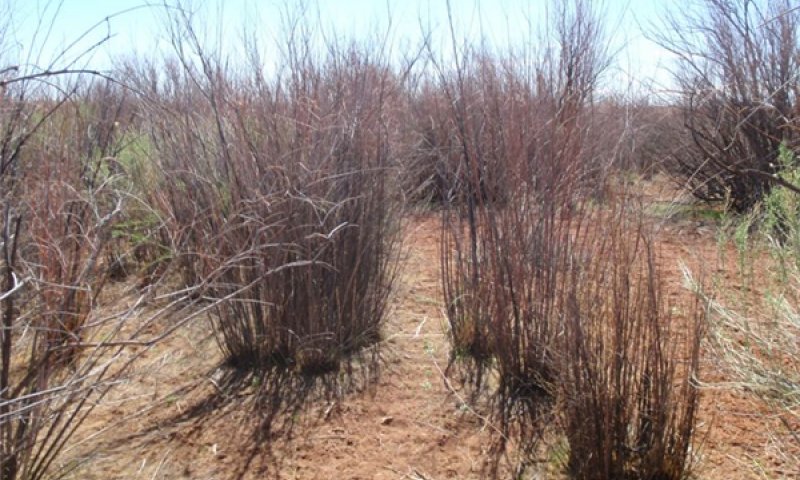
Figure 12. Loamy Wash with Invasive Trees
This plant community contains an canopy of invasive species like tamarisk and/or camelthorn. Native shrubs and grasses are present in small patches. Native shrubs and grasses are being replaced by native and non-native annual species, such as Russian thistle, in the understory.
Transition T1A
State 1 to 2
Increase in invasives native shrubs and annuals due to various factors including decline of perennial cool and warm season grasses from year-round grazing and decreased site stability; changes also be due to decrease in flooding frequency and intensity due to drought and/or water diversion and channel changes. This reduces the benefit of overland flow that promotes productive grasslands.
Restoration pathway R2A
State 2 to 1
Managed grazing/No grazing, woody species control, invasive weed control, range seeding.
Transition T2A
State 2 to 3
Unmanaged grazing, persistent drought, increase in invasive woody species, channelized flows accelerate channel scour, gully erosion and create deep channels that promote the establishment of invasive woody species thru seed sources and frequent flooding.
Restoration pathway 1
State 3 to 2
Managed grazing/no grazing, woody species control, invasive weed control, range seeding.
Additional community tables
Table 8. Community 1.1 plant community composition
| Group | Common name | Symbol | Scientific name | Annual production (lb/acre) | Foliar cover (%) | |
|---|---|---|---|---|---|---|
|
Grass/Grasslike
|
||||||
| 0 | Common Grasses | 600–1000 | ||||
| western wheatgrass | PASM | Pascopyrum smithii | 300–500 | – | ||
| blue grama | BOGR2 | Bouteloua gracilis | 200–400 | – | ||
| alkali sacaton | SPAI | Sporobolus airoides | 150–350 | – | ||
| vine mesquite | PAOB | Panicum obtusum | 50–200 | – | ||
| James' galleta | PLJA | Pleuraphis jamesii | 50–150 | – | ||
| 1 | Ocassional Grasses | 25–125 | ||||
| squirreltail | ELELE | Elymus elymoides ssp. elymoides | 20–60 | – | ||
| spike dropseed | SPCO4 | Sporobolus contractus | 5–40 | – | ||
| sand dropseed | SPCR | Sporobolus cryptandrus | 5–40 | – | ||
| Indian ricegrass | ACHY | Achnatherum hymenoides | 5–40 | – | ||
| sideoats grama | BOCU | Bouteloua curtipendula | 5–40 | – | ||
| 2 | Other Grasses | 0–55 | ||||
| Grass, annual | 2GA | Grass, annual | 0–20 | – | ||
| Grass, perennial | 2GP | Grass, perennial | 0–20 | – | ||
| threeawn | ARIST | Aristida | 0–20 | – | ||
| mat muhly | MURI | Muhlenbergia richardsonis | 0–20 | – | ||
| ring muhly | MUTO2 | Muhlenbergia torreyi | 0–20 | – | ||
|
Forb
|
||||||
| 3 | Forbs | 30–90 | ||||
| Forb, perennial | 2FP | Forb, perennial | 5–35 | – | ||
| Forb, annual | 2FA | Forb, annual | 5–25 | – | ||
| globemallow | SPHAE | Sphaeralcea | 0–10 | – | ||
| common sunflower | HEAN3 | Helianthus annuus | 0–10 | – | ||
| whitestem blazingstar | MEAL6 | Mentzelia albicaulis | 0–5 | – | ||
| woolly plantain | PLPA2 | Plantago patagonica | 0–5 | – | ||
| rose heath | CHER2 | Chaetopappa ericoides | 0–5 | – | ||
| western tansymustard | DEPI | Descurainia pinnata | 0–5 | – | ||
|
Shrub/Vine
|
||||||
| 5 | Common Shrub | 145–265 | ||||
| fourwing saltbush | ATCA2 | Atriplex canescens | 145–265 | – | ||
| 6 | Other Shrubs | 10–60 | ||||
| shadscale saltbush | ATCO | Atriplex confertifolia | 0–30 | – | ||
| Greene's rabbitbrush | CHGR6 | Chrysothamnus greenei | 0–20 | – | ||
| rubber rabbitbrush | ERNA10 | Ericameria nauseosa | 0–20 | – | ||
| broom snakeweed | GUSA2 | Gutierrezia sarothrae | 0–20 | – | ||
| greasewood | SAVE4 | Sarcobatus vermiculatus | 0–20 | – | ||
Interpretations
Animal community
This site is suitable for yearlong grazing by either cows and calves or stockers. Accessibility is usually very good because stock tanks can be built in these areas. Erosion is not a hazard unless the vegetational cover has been severly reduced.
There is relatively poor diversity within the plant community of this site. Because of the grass component, the site is dominated by grassland wildlife species. However, the site is transitory to almost all species because of the proximity of water.
Recreational uses
This site is found in grassy swales and flood plains, characterized by open grasslands interspersed with a few flowering forbs and shrubs.
Winters are cold, however the remainder of the year is comfortable. Springtime is usually very windy.
Activities include photography, hunting, camping, hiking, and horseback riding.
Other products
.
Supporting information
Type locality
| Location 1: Navajo County, AZ | |
|---|---|
| General legal description | Typical site is located in the northeast corner of the Turquoise Ranch, Winslow, AZ. |
Other references
Zimmerman, J.C., L.E. DeWald, and P.G. Rowlands. 1999. Vegetation diversity in an interconnected ephemeral riparian system of north-central Arizona, USA. Biological Conservation 90:217-228.
Updates and revisions for this ESD were conducted as part of a 2007-2012 Interagency Technical Assistance Agreement between the Bureau of Indian Affairs–Navajo Region and the NRCS-Arizona.
Contributors
Jennifer Puttere
Karlynn Huling
Ken Gishi
Larry D. Ellicott
Rangeland health reference sheet
Interpreting Indicators of Rangeland Health is a qualitative assessment protocol used to determine ecosystem condition based on benchmark characteristics described in the Reference Sheet. A suite of 17 (or more) indicators are typically considered in an assessment. The ecological site(s) representative of an assessment location must be known prior to applying the protocol and must be verified based on soils and climate. Current plant community cannot be used to identify the ecological site.
| Author(s)/participant(s) | Jennifer Puttere |
|---|---|
| Contact for lead author | State Rangeland Management Specialist, NRCS-Arizona State Office, Phoenix, AZ |
| Date | 03/21/2011 |
| Approved by | |
| Approval date | |
| Composition (Indicators 10 and 12) based on | Annual Production |
Indicators
-
Number and extent of rills:
This site is composed of varying degrees of deposited alluvium. Rills may occur 2 to 3 times on a 150-ft transect. -
Presence of water flow patterns:
This is a run-in site. Water flow patterns will be present in 4 to 5 times on a 150-ft tape on a reference site. -
Number and height of erosional pedestals or terracettes:
None -
Bare ground from Ecological Site Description or other studies (rock, litter, lichen, moss, plant canopy are not bare ground):
10-30% bare ground -
Number of gullies and erosion associated with gullies:
None -
Extent of wind scoured, blowouts and/or depositional areas:
Depositional areas around shrubs may occur twice in a 150-ft tape -
Amount of litter movement (describe size and distance expected to travel):
Most of the herbaceous litter remains in place or travels only a short distance (1-2 ft) away. Woody litter remains in place. -
Soil surface (top few mm) resistance to erosion (stability values are averages - most sites will show a range of values):
Stability under canopy is 2 or 3; stability not under canopy is 3 to 4. -
Soil surface structure and SOM content (include type of structure and A-horizon color and thickness):
This site is a dynamic fluvial site; under natural conditions soil organic matter is irregular due to unpredictability of fluvial deposits. Surface structure is platy or single grain. -
Effect of community phase composition (relative proportion of different functional groups) and spatial distribution on infiltration and runoff:
Large amounts of runoff and decreased infiltration in interspaces; under shrub and grass canopy cover there is decreased runoff in increased infiltration. -
Presence and thickness of compaction layer (usually none; describe soil profile features which may be mistaken for compaction on this site):
None -
Functional/Structural Groups (list in order of descending dominance by above-ground annual-production or live foliar cover using symbols: >>, >, = to indicate much greater than, greater than, and equal to):
Dominant:
Warm season bunch grasses > Cool season colonizing grasses >Sub-dominant:
Warm season colonizing grasses > Large shrubs >Other:
Cool season bunch grasses > Low shrubs > ForbsAdditional:
-
Amount of plant mortality and decadence (include which functional groups are expected to show mortality or decadence):
All plant functional groups are adapted to survival in all but the most severe droughts. -
Average percent litter cover (%) and depth ( in):
-
Expected annual annual-production (this is TOTAL above-ground annual-production, not just forage annual-production):
Expected average production 1100-1300 lb/acre annually. -
Potential invasive (including noxious) species (native and non-native). List species which BOTH characterize degraded states and have the potential to become a dominant or co-dominant species on the ecological site if their future establishment and growth is not actively controlled by management interventions. Species that become dominant for only one to several years (e.g., short-term response to drought or wildfire) are not invasive plants. Note that unlike other indicators, we are describing what is NOT expected in the reference state for the ecological site:
Rabbitbrush, broom snakeweed, cockleburr, commom sunflower, Russian thistle. -
Perennial plant reproductive capability:
All plants native to the site are adapted to the climate and are capable of producing seeds, stolons and rhizomes in all but the most severe droughts.
Print Options
Sections
Font
Other
The Ecosystem Dynamics Interpretive Tool is an information system framework developed by the USDA-ARS Jornada Experimental Range, USDA Natural Resources Conservation Service, and New Mexico State University.
Click on box and path labels to scroll to the respective text.